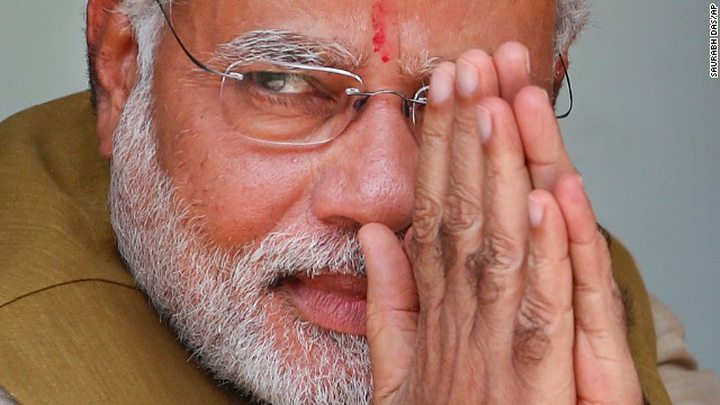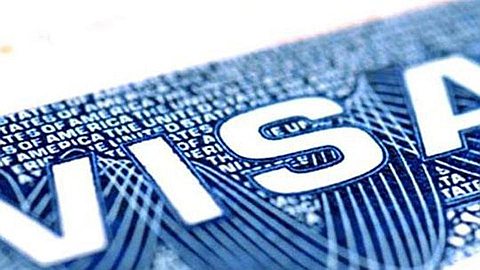Narendra Modi Aims to Bolster India's Tech Credentials on US Visit

The flags are ready, the stadium is too. The dinner with the Fortune 500 CEOs is scheduled, and so is the one-on-one with president Obama.
Narendra Modi, the prime minister of India, will be welcomed in New York on Wednesday with much goodwill – but also increasing doubts about his ability to deliver promised reforms in the emerging south Asian power.
If attention in the White House, on Capitol Hill and in the US media is directed elsewhere – to the Middle East, the visits of the Chinese premier, Xi Jinping, and the Pope – the focus of the media in India is not. Modi’s second visit to the US while in office is already generating frontpage headlines and leading bulletins.
For between meetings in New York, Modi, who has been in power for nearly 18 months, will tour Silicon Valley, meet the aristocracy of internet entrepreneurs and address a colourful, noisy rally for members of the Indian diaspora. It is the first visit of an Indian prime minister to the west coast for more than three decades.
More than 40,000 people have applied for 18,500 places at an event in San José, in the heart of Silicon Valley, on Sunday evening.
Organisers hope to repeat the success of the rally in New York on Modi’s first visit to the US last autumn.
“Madison Square Garden was filled with the euphoria following the [May 2014 Indian] election. We are filling the arena with what he has done in a year in office,” said Rakhi Israni, of the Indo-American Community on the West Coast, an umbrella organisation of 500 groups, which is behind the event.
There are 2.8 million Indian Americans, forming one of the wealthiest and best-educated diaspora communities in the US. Many became involved in Modi’s election campaign and levels of support for the prime minister, who leads the Bharatiya Janata party, have long been high.
Around half a million Indian Americans, the second biggest concentration in the US, live in the San Francisco Bay area and the community is overrepresented in the IT industry.
According to research conducted in 2012 by Stanford University, Indian Americans have founded more technology companies than any other immigrant group.
For Modi, the west coast community of Indian Americans is significant both politically and economically.
Advisers say the prime minister, who has consistently promoted technology as the answer to India’s enduring social and economic problems, believes there is an opportunity to enlist the most powerful people in the global IT industry in his push for technological modernisation in his homeland.
Modi will visit Facebook’s Menlo Park headquarters, Googleplex in Santa Clara, and Tesla, the clean energy firm.
Along with IT superstars like Mark Zuckerberg, founder of Facebook, and Tim Cook of Apple , the vegetarian yoga practitioner will also be seeing Sundar Pichai and Shantanu Narayen and Satya Nadella, the India-born heads of Google, Adobe and Microsoft.
Though India’s IT industry has long been lauded as one of the country’s success stories, the broader challenges of developing the internet around the country remain substantial.
Though there are said to be more than 300 million internet subscribers in India – more than fifth of the population – most connections are patchy and among the slowest in the world. Only a tiny fraction qualify as broadband by industry definitions. A complex web of conflicting commercial interests and bureaucratic obstacles has hindered rapid improvement. Even telephone calls drop repeatedly and are often barely audible, while network congestion means it is impossible to use a smartphone even in parts of the capital, Delhi.
The slow progress at clearing such problems – typical of those that have so far put the brakes Modi’s modernisation drive in other fields – has meant the investment some hoped would come following the landslide election last year has not yet materialised.
“Modi is trying to convince innovators and investors in the US that India is an easier place to invest in but there’s a growing perception that he is all talk and no action on reform. When he was made prime minister, there was tremendous excitement in the [US] community but expectations have not been met, ” said Michael Kugelman, south Asia specialist at the Woodrow Wilson Center in Washington.
Last week, Jeff Immelt, the CEO of General Electric, told reporters he saw great opportunities in India but wanted it to “be easier to do business” there.
“We believe that ... Modi’s vision is the right vision and what we expect is just execution – better execution, more execution, faster execution,” Immelt said.
Economic growth in India has recovered to around 7% after flagging before Modi took power.
Commentators point out that trade between US and China was six times greater than that with India last year.
Arms sales from the US to India have soared however, with a $2.5bn deal to buy helicopters cleared by Indian officials earlier this week. The US has now overtaken Russia as India’s biggest arms supplier. There are also ambitious plans for cooperation in the field of sustainable energy.
The US and India have many common interests and are both known for their “democracy, diversity and talent for entrepreneurship and innovation”, former and current Indian diplomats say. India is seeking investment while the US is looking to open new markets. Both nations are concerned about China’s influence and growth.
However, relations have never been smooth and there are mutual accusations of trade protectionism.
Senior officials in Delhi, speaking on condition of anonymity, said some of India’s recent positions, such as temporarily blocking a global trade deal last year, simply reflected as “newly confident and robust” response after decades of “punching below our weight”.
During the cold war, India tilted towards Moscow, and the US towards its hostile neighbour Pakistan. In 2005 Modi was denied a visa to the US under a law barring entry to foreigners who have committed “particularly severe violations of religious freedom”.
The decision followed accusations that Modi, who started his career as an organiser with a rightwing Hindu organisation, had stood by during, or even encouraged, sectarian violence in the western state of Gujarat in 2002, when he was chief minister there. More than 1,000 people, mostly Muslims, were killed by rioters.
Modi has denied all wrongdoing and India’s supreme court ruled that there was insufficient evidence to back the charges against him.
The relationship reached a nadir when the Indian deputy consul-general in the US was arrested for visa fraud in New York in December 2013. The affair prompted a vitriolic reaction in India to what was seen as disrespectful bullying. This in turn prompted US commentators to accuse India of oversensitivity and behaviour unbecoming of an aspirant future power.
Since then, however, there has been some improvement. A visit by Obama in January, even if cut short by the death of king Abdullah of Saudi Arabia, was seen in India as a turning point – although the president’s short lecture on women’s rights and diversity was less well received.
However, Kugelman said India was still unlikely to receive sustained attention from US policymakers.
“The last meeting between Obama and Modi injected a lot of momentum into the relationship but that does not mean India is on the front-burner in the grand scheme of things,” he said.
Both nations look to the Indian diaspora in the US to bridge deep cultural and ideological differences.
The welcome from Indian Americans is not unanimous, however.
More than 100 US-based academics, most of Indian origin, signed an open letter accusing Modi of presiding over “well-publicised episodes of censorship and harassment of those critical of his policies, bans and restrictions on NGOs leading to a constriction of the space of civic engagement, ongoing violations of religious freedom, and a steady impingement on the independence of the judiciary”.
Such criticism is unlikely to have much impact either at home, where polls say Modi remains very popular, nor in the US. A counter-petition accused signatories of crossing the line between “hitting out at Modi and hurting India”.
Israni, of the Indo-American Community of the West Coast, said the organisers of the San José event this Sunday were “focused on the positive”.
“The idea that he is going to fill up the arena is a testament to the idea that no matter how afar from India they are, home is always home, and there are a lot of people who want to see India progress,” she said.





